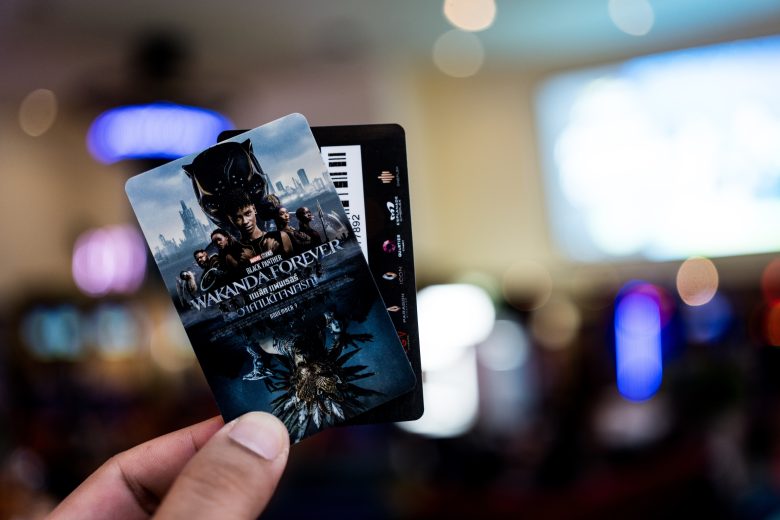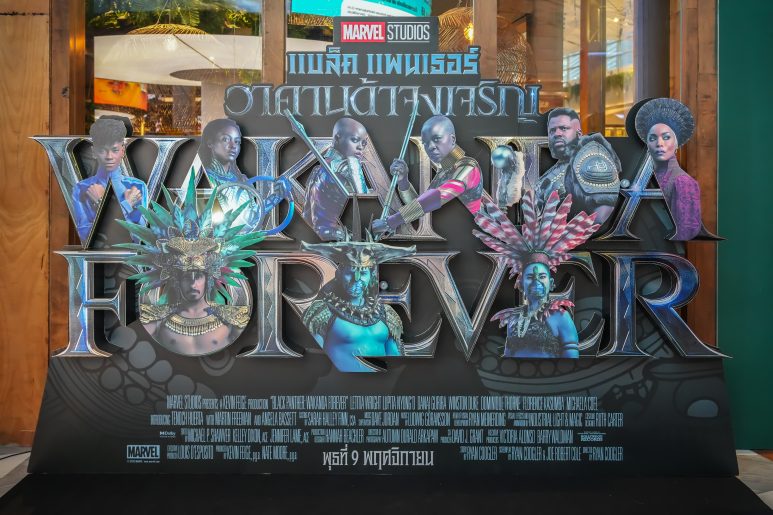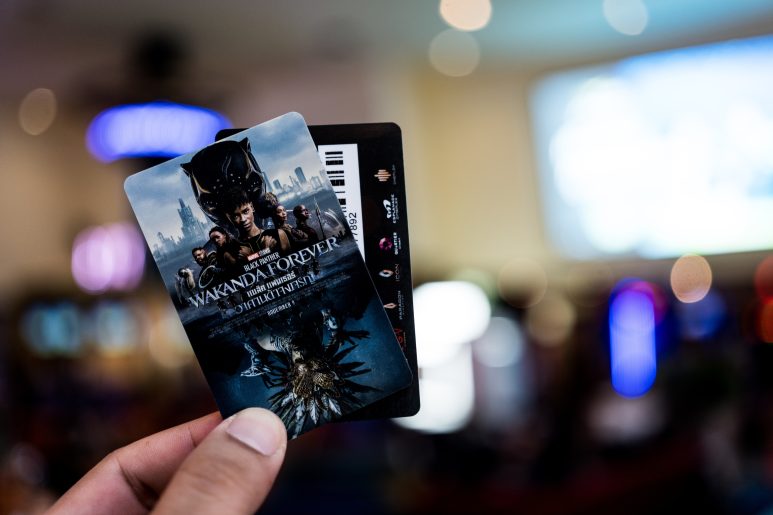By Angelo Boccato
Black Panther: Wakanda Forever represented a significant challenge for director Ryan Coogler, its cast, and Marvel Studios.
From one point of view, it was crucial to honour the memory and legacy of the late Chadwick Boseman, whose portrayal of King T’ Challa has been a milestone not only in the super heroic movies arena, but for Black representation on screen as a whole.

From another perspective, there was the creative challenge of keeping up with the unprecedented success and reception from critics, awards, and the public of Black Panther. The sequel directed by Ryan Coogler has managed to meet both targets, while also expanding representation in the movie, by embracing a certain shape of Afrolatinidad.
The movie portrays two global powers, Wakanda and Talokan, which have thrived historically by either remaining hidden, or by disguising their power. These civilisations risk everything in the event of a discovery of their true power at the hands of the very prying and predatory colonial eyes of the Global North. While the representations of both is important, Talokan in specific is rather important for Latinidad representation. It replaces Atlantis from the Marvel Comics and embraces Mesoamerican history and mythology.
A major difference between Wakanda and Talokan, is that the latter was established as a haven, escaping the devastation and diseases brought by Spanish conquistadores. Compared to the first movie, the colonial element is more prominent in this sequel, especially through the global race for Vibranium, a fictional metal that can absorb, store and release kinetic energy.
“I think one of the goals of the filmmakers behind his work is to bring a sort of love letter to a culture that is not often depicted in the mainstream. In the case of Wakanda, one of the things is that it brings elements across the continent of Africa. In the American context, people often struggle with understanding that there are so many different countries in Africa; ironically, we never seem to make that mistake with Europe. Something that happens in the original film and continues in this film, is that there are elements from very distinct regions brought together in a way that allows for an African-American or diaspora audience to see themselves on screen,” Julian C. Chambliss, Professor of English and Val Berryman Curator of History at the MSU Museum at Michigan State University, tells MDI.
“There is an important distinction here between a documentary and a fantasy approach to filmmaking. Therefore the criticism to be levelled against a film like Black Panther and the sequel is that would not happen in real life, but we all forget to make the same criticism around similarly white-led films. One of the things that happen in these films is the attempt to broaden the cultural dialogue in a way that references real history. That is what you see happening with Wakanda, and now with Talokan, you see this happening with Mesoamerica. This is important, because obviously in a Western context, we really only think about the sort of devastation created by the Columbian exchange, and we don’t necessarily always celebrate the accomplishments of the societies that existed before.”
Portrayals of Mesoamerican civilisations in Hollywood movies are rare, and when it comes to a relatively recent example, Mel Gibson’s Apocalypto, these portrayals are often entrenched in racist stereotypes and tropes.
Racist stereotypes and tropes seem to be a constant element, also when it comes to the portrayals of Latinos, something that Chambliss highlights in his article in The Conversation. He says they are too often portrayed only as desperate migrants or crime kingpins and drug dealers, and it is possible to also find a significant element of colorism, differentiating the experiences of White Latinos from the ones of Black and Indigenous Latinos.
Very often, Black and Indigenous Latinos will be portrayed as villains or destitute, and this does not only happen in Hollywood but in Mexico too, as Mexican actor Tenoch Huerta,who plays Namor, King of Talokan, said during an interview “Mexico (on TV) looks like a Scandinavian country”.
According to multi-media producer and co-founder of AfroLatinx Travel, Dash Harris Machado in her article for Refinery 29, when it comes to Huerta,who is also the author of an upcoming book on Brown Power and is vocal about racism in Mexico, “the role (of Namor) isn’t important because it’s a representation of Latinidad but rather because it reflects the people, lands, and cultures that the colonization and hegemony that created Latinidad tried to eradicate”.
Something else that Machado points out is the fact that “…is not surprising that it took U.S Black Entertainment, not Latine Media” to tell dignified stories of Indigenous culture and civilisation in a major production.

Another Latin connection in the movie is represented by Haiti, the first Black Republic in 1804 and specifically an Afro-Latin one.
The contrast here is important when it comes to the neighbouring Dominican Republic, whose population is also AfroLatina, but due to a history of colonialism, colourism and racism denies this heritage, something proved by its history fuelled with racism against Haitians, and Dominicans of Haitian descent, as exemplified by the documentary “Stateless” by Michèle Stephenson.
Haiti is the country of the Black Jacobins, where enslaved Afrodescendants, led by Toussaint Louverture rebelled against France’s colonial power, humiliating European colonial powers as a whole and paying ;In connection with this, it does not seem random that it is France at the beginning of the movie that attempts and fails, to steal Vibranium from Wakanda.
“I think it’s not an accident that Haiti is offered as a refuge for Nakia in the film. If we think about the real history of Haiti, the first black Republic in the Western Hemisphere it’s sort of a journey in a place where slaves see their freedom. That’s probably a deliberate choice and it does speak to the nature of the complexity of African heritage in the Western Hemisphere and in the Caribbean and how the legacy of revolution and liberation are central to Caribbean identities. Again, this is not something that we often talk about but it’s very important for the self-identification of people in those regions. This is, again, a kind of a diasporic narrative that takes into account the many different histories and the way that liberation and freedom are understood and celebrated within these communities” Chambliss adds.
Wakanda Forever goes further compared to its predecessor, by bridging forward cultures and civilisations that are often misrepresented – if not vilified in popular culture. It offers AfroLatinos and Latinos of Indigenous descent a representation connected with both myth and history, showing the right path to follow for diversity and inclusion in upcoming phases of the Marvel Cinematic Universe and other movies of this genre.
_________________________________________________________________________________________________________
Photo Credits: Samut Prakan / Shutterstock

